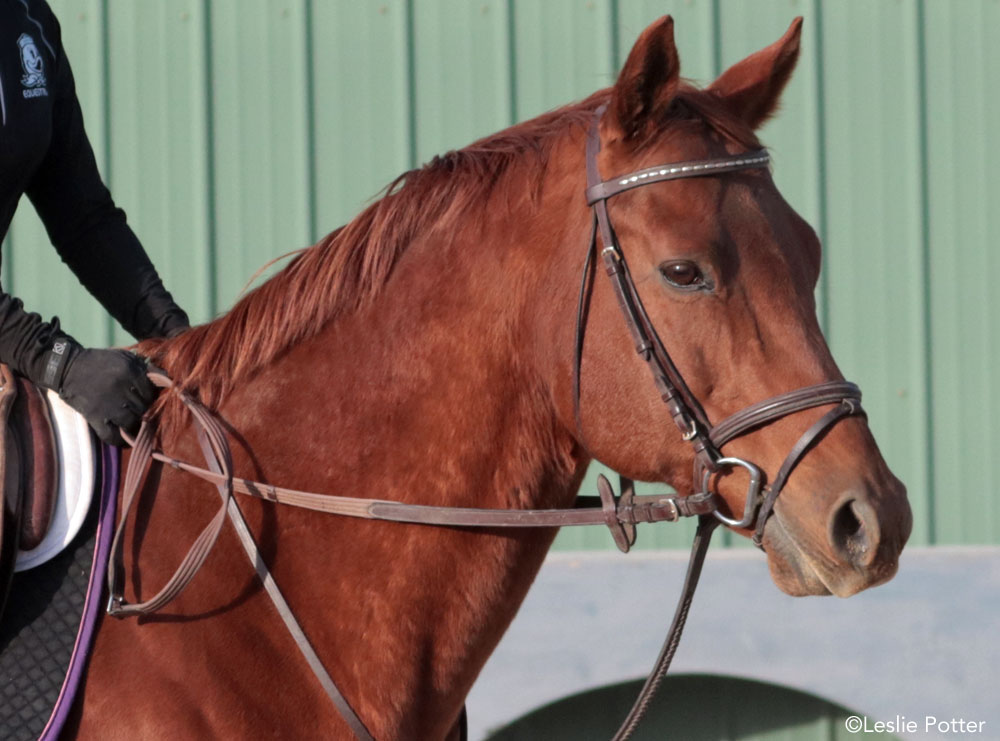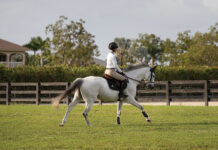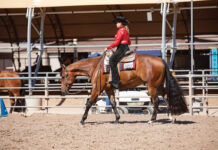 Every rider should strive to have soft, giving hands. As a result, your horse will have a soft mouth. Establishing correct contact will help develop your horse’s topline and make him more supple. Learning correct contact takes concentration and patience, but it’s an important step to being an effective rider. Riders often develop bad habits with their hands, but there are a few tricks to help you solve them. Read on to learn more about riding with good hands.
Every rider should strive to have soft, giving hands. As a result, your horse will have a soft mouth. Establishing correct contact will help develop your horse’s topline and make him more supple. Learning correct contact takes concentration and patience, but it’s an important step to being an effective rider. Riders often develop bad habits with their hands, but there are a few tricks to help you solve them. Read on to learn more about riding with good hands.

Riding with Good Hands Tip #1: Go Forward
The first tip in riding with good hands is to make sure your horse is moving forward. It’s important to first have your horse moving forward in front of your leg before you work on contact.
Your horse should move forward without you needing to kick him every step. After he understands to go forward in a consistent rhythm, then you’re ready to introduce some contact.
When you ask for contact with your hands, your horse should give to the pressure. He may not understand what you want, so it will take time to teach him. If he isn’t responding, you may have to perfect your technique so that he clearly understands what you are asking.
Tip #2: Elastic Elbows
The second tip in riding with good hands is to make sure you have elastic elbows. Imagine your elbow is a rubber band. The pressure is not stiff or harsh; it’s an elastic contact.
Your horse’s head moves with each stride, so you will need to move your elbows to keep the contact consistent. Otherwise, you’ll be jerking on his mouth with every movement of his head, and he won’t understand what you’re asking. Allow movement with your elbows while still applying pressure to your horse’s mouth. When he gives to your pressure, relax your elbows. Imagine the rubber band is relaxed.
You can practice elastic contact with a friend using an extra pair of reins. Your friend will mimic the motion of your horse’s head so that you can practice allowing the movement. You can also practice taking elastic pressure. When your friend gives to your pressure, practice relaxing your elbow.
This is a complex idea and takes lots of practice to master. Start at the walk, then once your horse understands, move on to the trot.
Riding with Good Hands Tip #3: Pulling Problems
If you find that your horse is resisting or pulling against you, it means that you are pulling too hard. Taking contact should not be a pulling match.
Keeping the rubber band in mind will help you ask your horse to give to the contact without creating a pulling match.
Tip #4: Position Problems
The next tip in riding with good hands is to make sure you have correct position. Your hands should be positioned with your thumbs up and fingers closed gently around the rein. There should be a straight line from your elbow through your wrist to the bit.
Common problems are “piano hands,” loose fingers, and holding your hands too high or too low.
Piano hands are when you don’t keep your thumbs on top, letting them rotate down instead; it looks like your hands are positioned to play the piano. This is sloppy equitation, but also affects the contact.
There is a simple trick to help you correct this: Hold a crop across your hands with your thumbs on top. You will unable to make piano hands, but will still be able to control your mount. Soon, correct position will take the place of your old habit.
Loose fingers create a problem because they allow your horse to work the reins out of your hands until they’re too long and contact becomes ineffective.
Riding with Good Hands Tip #5: Hand Habits
Every few strides, take a mental check of your grip on the reins to turn your bad habits into good ones. Eventually you won’t have to think about it, and the correct way will become second nature.
Some riders try to lower their horse’s head by pulling down with their hands. This is counterproductive and will not help you establish proper contact. Others try to get their horse’s head up by holding their hands up. Both habits cause a broken line from your hand to the bit.
Learning to take contact correctly takes a lot of practice, but the results will be worth it. Your horse will have a soft mouth and will develop a stronger topline and supple body.
If you have a bad habit with your hands, it takes some effort to fix. With practice, soon it will be a thing of the past!
This article originally appeared in the March/April 2017 issue of Young Rider magazine. Click here to subscribe!





